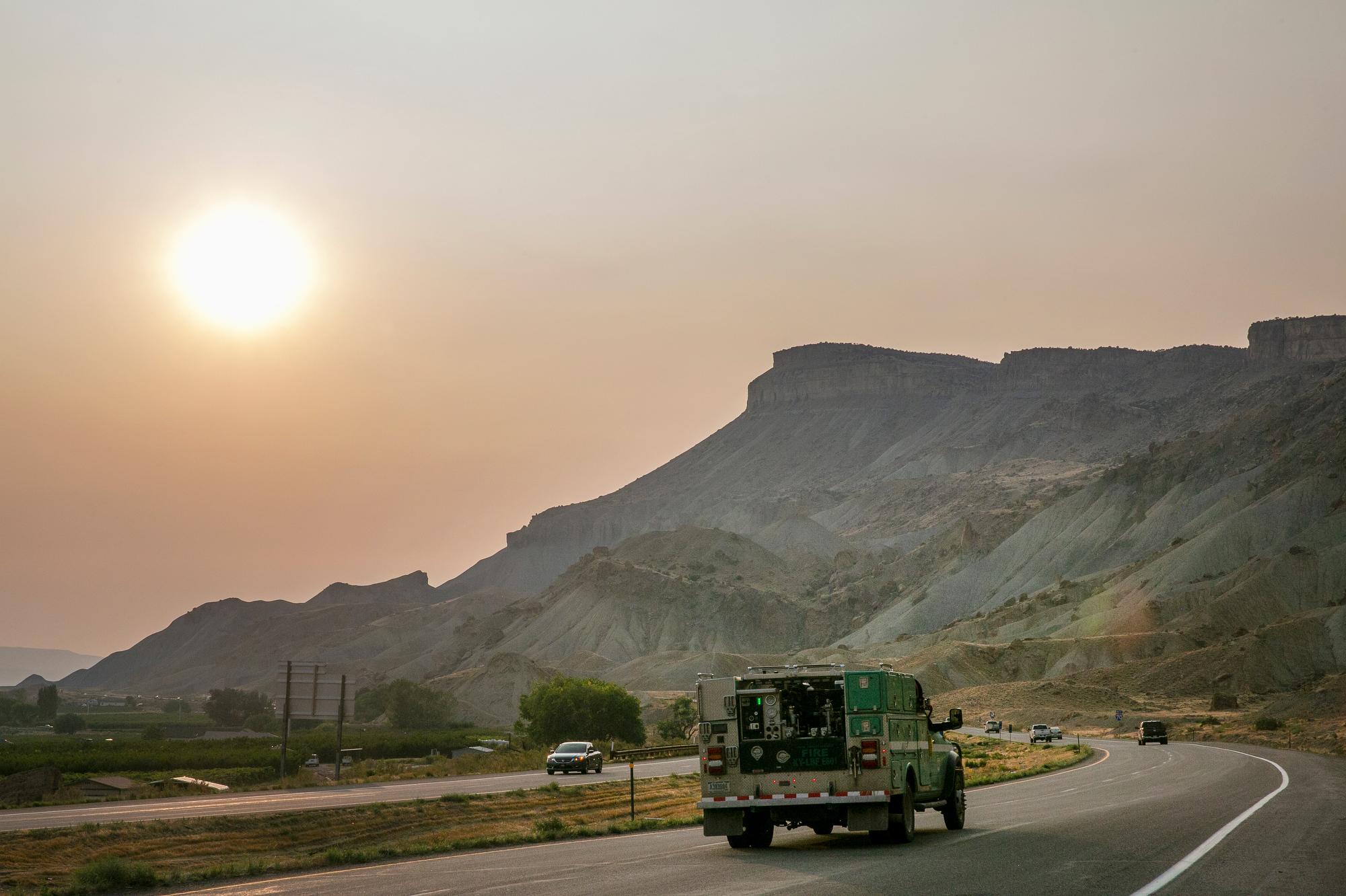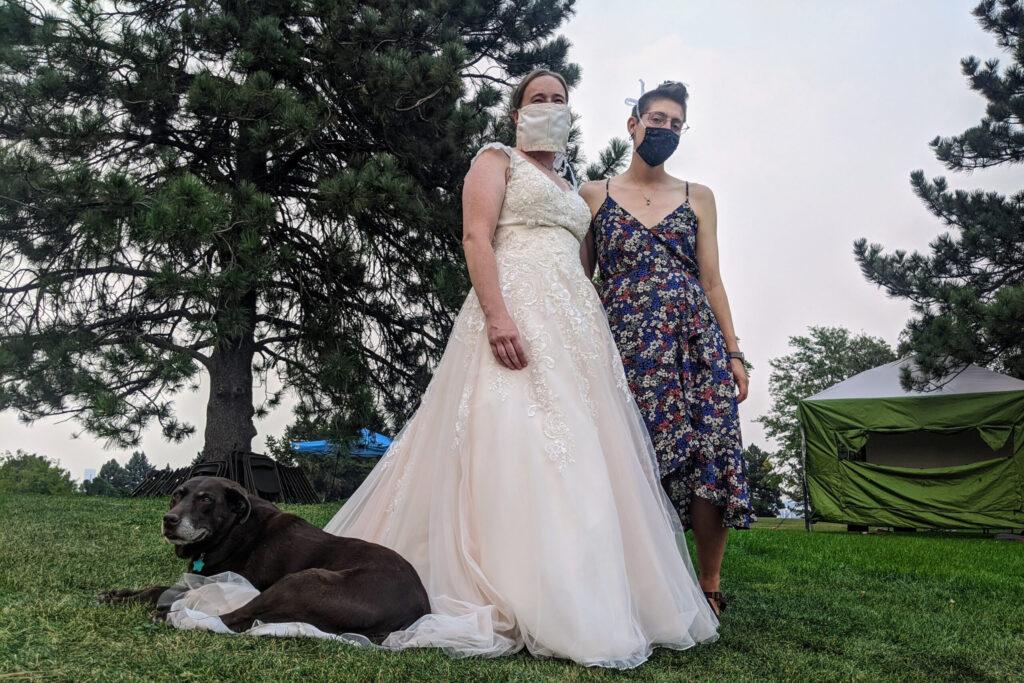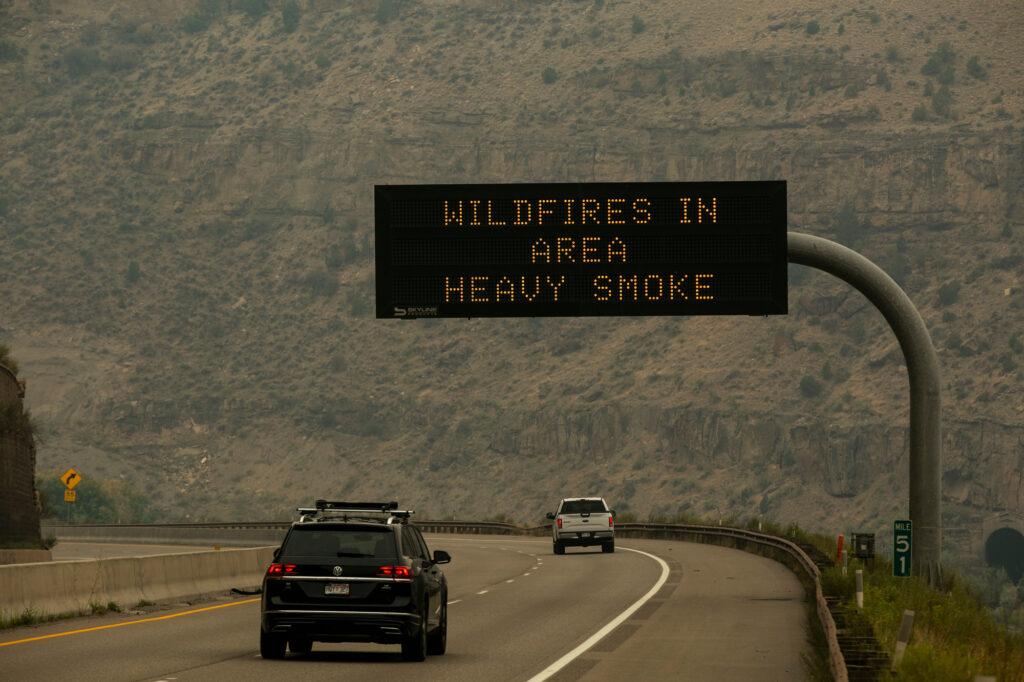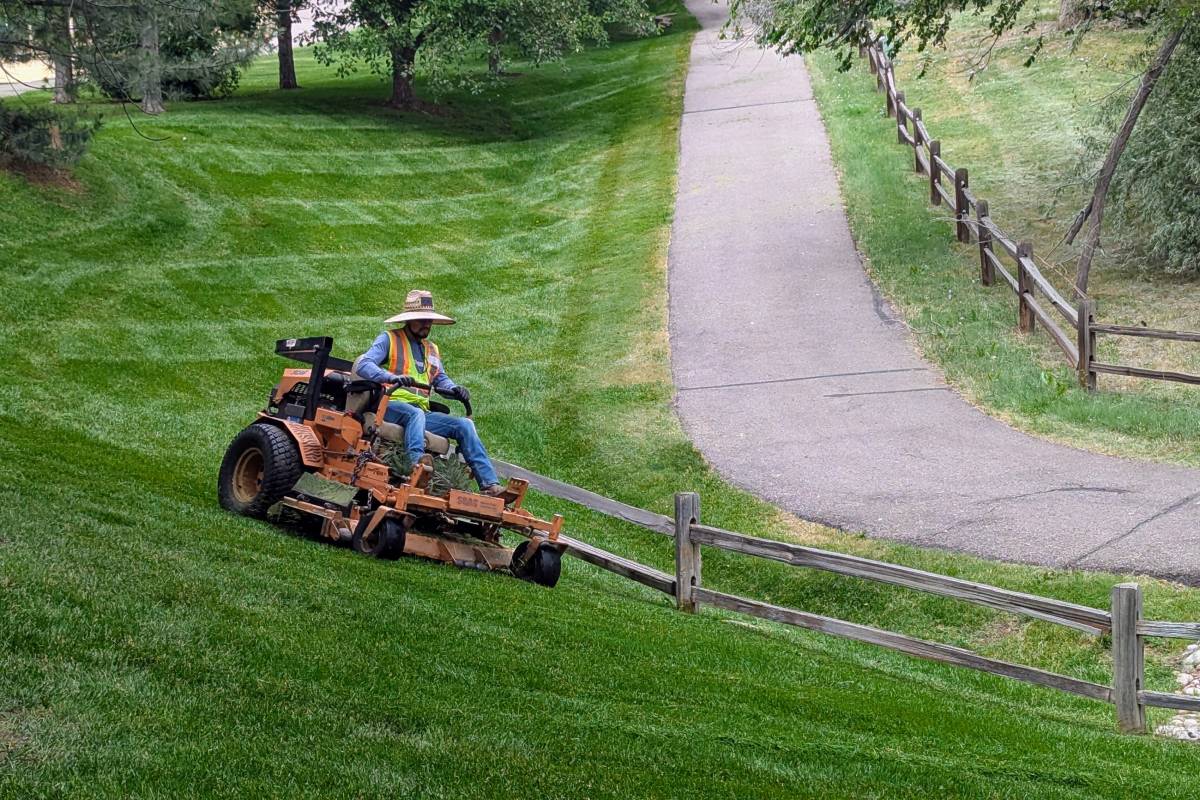
Wildfire smoke wasn’t invited to Katya Thronweber and Hannah Bergeman’s wedding. Like any careful party crasher, it snuck in quietly.
The couple held their ceremony on top of Ruby Hill in southwest Denver. The park offered both relative safety from the coronavirus and a panoramic view of the city’s skyline.
The air was clear as the brides set up in the morning, but smoke shrouded the vista later in the afternoon. Bergeman even picked up the faint smell of burning wood through her mask.
“I was like, ‘Oh wow,’” she said. “I didn’t know that was happening.”
Similar situations have played out across the western U.S. amid a historic wildfire season, prompting scientists and health officials to rethink how to alert the public.
The job is trickier than other sorts of emergency warnings. Unlike floods or tornados, the danger from smoke is relative. Sometimes it can be a threat to everyone’s well-being. In other instances, only people with pre-existing conditions, like asthma or heart conditions, need to take shelter.
The situation at the wedding landed somewhere right in the middle. Earlier in the day, the Cameron Peak fire west of Fort Collins sent a massive plume of smoke into the Front Range.
Air monitors registered “very unhealthy” levels of small particulate pollution according to the U.S. Air Quality Index. Colorado health officials recommended vulnerable groups avoid all outdoor activity. Everyone else was asked to minimize their time outside.
Meanwhile, the newlyweds had no idea about the warnings. Even after being told, the couple wasn’t worried.
“It’s not something I’m aware of in terms of considering my risk,” said Thronweber.
“I think we notice if it’s bad,” added Bergeman, “but we don’t actively make choices around it.”

Ana Rappold, a statistician with the Environmental Protect Agency, said this is not an uncommon attitude, especially among healthy people. She conducts research through a phone app called Smoke Sense. It allows users to monitor real-time smoke conditions and report any symptoms through a survey.
A recent study found a common pattern among app users. While they tended to agree smoke was dangerous, they only tried to avoid it after experiencing symptoms. From a public health perspective, Rappold said she would much rather have people take preventative action before landing in an emergency room.
“You want people to think about smoke as a component of the weather,” she said. “In heavy rain or a thunderstorm, you want people to take an umbrella.”
While people have a good sense of how to protect themselves from rain, Rappold said there's much more uncertainty around smoke. Even the public health community is “unsure how to communicate what people should do, how immediately they should take action, and so forth.”
Tony Gerber, a pulmonologist at National Jewish Health in Denver, agrees there should be more precise ways to warn the public about the danger of wildfire smoke. He imagines a phone app that could issue warnings based on someone’s personal health profile.
“Then it could just spit out: the air quality is safe today! You’re not going to have a problem,” he said.
Currently, EPA’s AirNow application does not allow people to set personal preferences. The equivalent Canadian application allows users to ask for an alert when the outdoor air quality reaches a certain level but falls short of the personalization Gerber imagines.
Private companies have stepped in with their own air quality solutions. Apps like IQAir let users set personal preferences for notifications. The systems also combine readings from both public and private air quality sensors to try to create a higher-resolution map of air quality conditions.

Currently, the Colorado Department of Public Health and the Environment issues air quality warnings for large areas that can last for hours. The warnings also only incorporate readings from public sensors.
Gerber served on Colorado’s Air Quality Control Commission until last month when Gov. Polis declined to reappoint him with little explanation. Gerber said he hopes his old colleagues eventually consider updated systems for government air quality warnings, especially around smoke events.
“It wouldn't be a huge lift to do that,” said Gerber. “Maybe they could partner with a company.”
Andrew Bare, a spokesman for Colorado’s Air Quality Division, said he’s confident the current air quality alert system can reach the public. The warnings go out over government webpages email, social media, media alerts and even roadside signs. Bare said a phone notification system is “one idea,” but “probably not realistic for us right now.”
But a greater public understanding of wildfire smoke might not require high tech solutions. Hannah B.P. Brenkert-Smith, an environmental sociologist at the University of Colorado Boulder, noted people generally don’t change their behavior after short-term events, but “repeated responses are likely to garner increasing attention and response.”
One example is a recent survey of residents of Ashland, Oregon, which has seen more sustained experiences of wildfire smoke in recent years. The research found a large proportion of residents took protective action, like wearing a mask or replacing their air conditioner filters.
Scott Landes, Colorado’s air quality forecaster, thinks there’s a good chance people in Colorado are similarly waking up to the dangers of wildfire smoke. This summer, he’s been flooded with requests from journalists to put his warnings into their nightly newscasts. His subject of expertise is no longer “the back porch of meteorology.”
“More people are becoming aware of the situation,” said Landes. “It's good to see the media is coming on board with that as well.”
Still, the topic doesn’t demand much attention from Katya Thronweber, one of the brides at the smoky wedding in Denver. She and her new wife had already planned a whole event around a global pandemic. Air quality just wasn’t a priority.
“It feels like a thing I can block out,” she said. “My focus is on so many other things, it’s over there right now.”
Bergeman said she had considered one consequence of the smoke. The haze had filtered the sun into a strange red-orange. The light would forever be preserved in their wedding photos.
How To Protect Yourself From Wildfire Smoke
- Monitor Air Quality Conditions. The EPA posts up-to-date air quality warnings at AirNow.gov, which can also be downloaded as a phone application. The resource also offers air quality forecasts to help people plan their day.
- Avoid Outdoor Exercise. The harder you work out, the more air you breathe in. If the smoke has harmed outdoor air quality, try to find ways to work out indoors.
- Stay Indoors. A well-sealed home can often offer the best protection from smoke hazards. Keep windows closed and, if possible, run an air conditioner. Most units have filters that can reduce levels of smoke inside. Scott Landes, Colorado’s air quality forecaster, also recommends setting up a “safe room” with a HEPA filter in a home, where you know the air is safe to breathe.
- Wear An N95 Mask. While they are in short supply due to the pandemic, a very well-fitted N95, P95, or K95 mask or respirator can block the tiny, dangerous particles in wildfire smoke. But health experts warn it can be uncomfortable to properly wear a mask for long periods of time. Cloth masks and medical masks are not recommended. While those masks are good at stopping germs from exiting someone’s nose and mouth, they don’t stop smoke particles from entering.
- Recirculate The Air In Your Car. If you have to drive in smoky conditions, roll up the windows and set the vents to “recirculate.” Studies have found the step can help protect you from air pollution that can often come with traffic. It can also likely protect your lungs from wildfire smoke, according to Ana Rappold with the EPA.








